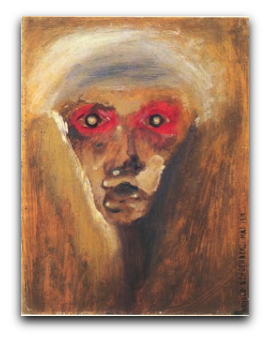
The Red Look (1910)
Arnold Schoenberg (1874-1951)
Austrian composer, painter and writer. He became an American citizen in 1941. Schoenberg took painting lessons from c. 1906 from Richard Gerstl, who long after his death was recognized as one of the leading exponents of Austrian Expressionism. For personal reasons involving Gerstl’s affair with his first wife, Schoenberg later in general denied Gerstl’s influence, which in any case was not lasting; Schoenberg remained an amateur and his painting was secondary to his life’s work as a composer and writer of theoretical musical texts, for which he is much better known. Schoenberg’s paintings are generally small in size and fall into two groups: a series of technically inept portraits and occasional landscapes on the one hand, and highly expressive visionary works on the other.
Gallery
Patrick Werkner. "Schoenberg, Arnold." In Grove Art Online. Oxford Art Online, http://www.oxfordartonline.com/subscriber/article/grove/art/T076702 (accessed February 21, 2010).
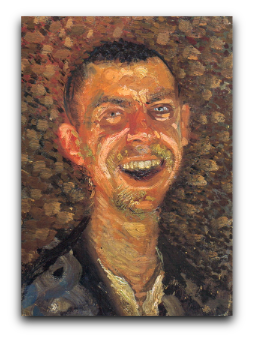
Self-Portrait Laughing (1908)
Richard Gerstl (1883-1908)
Austrian painter and draughtsman. Gerstl’s early and passionate interest in music led him in 1905 to frequent the circle around the composer Arnold Schoenberg. An unhappy romantic attachment to the latter’s first wife, Mathilde, was the cause of his suicide. Gerstl’s work included life-size portraits of friends and relatives, numerous self-portraits as well as a series of small-scale landscapes, which are among the most accessible of the works created by this sensitive, nervous and complex artist. Gerstl’s main interest was in figure painting.
Gallery
Otto Breicha. "Gerstl, Richard." In Grove Art Online. Oxford Art Online, http://www.oxfordartonline.com/subscriber/article/grove/art/T031781 (accessed February 21, 2010).
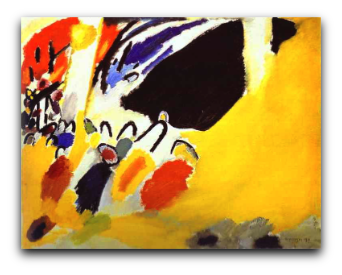
Impression III, Concert (1911)
Wassily Kandinsky (1866-1944)
Russian painter, printmaker, stage designer, decorative artist and theorist. A central figure in the development of 20th-century art and specifically in the transition from representational to abstract art, Kandinsky worked in a wide variety of media and was an important teacher and theoretician. He worked mainly outside Russia, but his Russian heritage continued to be an important factor in his development.
Gallery
Vivian Endicott Barnett. "Kandinsky, Vasily." In Grove Art Online. Oxford Art Online, http://www.oxfordartonline.com/subscriber/article/grove/art/T045642 (accessed February 21, 2010).
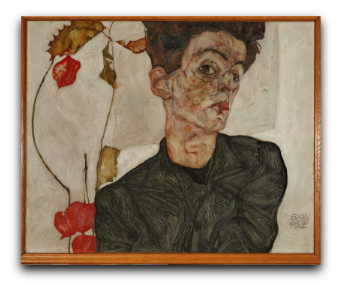
Self-Portrait with Chinese Lanterns (1912)
Egon Schiele (1890-1918)
Austrian painter, draughtsman and printmaker. He is, with Oskar Kokoschka, one of the major figures of Austrian Expressionism, in spite of the brevity of his artistic career, which lasted only about ten years. While remaining faithful to the initial influences on his work of the Vienna Secession and in particular of the art of Gustav Klimt, he developed a highly personal and expressive style and introduced psychologically and sexually intense subject-matter that was radical in its subjectivity and highly influential on later generations of artists.
Gallery
Edwin Lachnit. "Schiele, Egon." In Grove Art Online. Oxford Art Online, http://www.oxfordartonline.com/subscriber/article/grove/art/T076536 (accessed February 21, 2010)
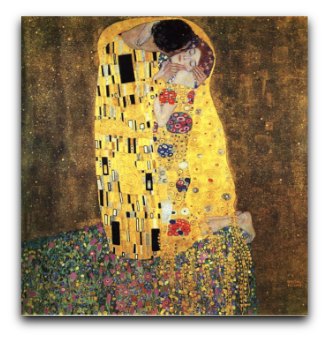
The Kiss (1907-1908)
Gustav Klimt (1862-1918)
Austrian painter and draughtsman. A leading exponent of Art Nouveau (Jugendstil), Klimt is considered one of the greatest decorative painters of the 20th century. His depictions of the femme fatale and his drawings treating the theme of female sexuality have assured him a place in the history of erotic art. He is remembered for his role in the formation of the Vienna Secession, the radical group of Austrian artists of which he became the first president in 1897, and also for the frequent scandals and protests that marked his later career.
Gallery
Peter Vergo. "Klimt, Gustav." In Grove Art Online. Oxford Art Online, http://www.oxfordartonline.com/subscriber/article/grove/art/T046890 (accessed February 21, 2010).
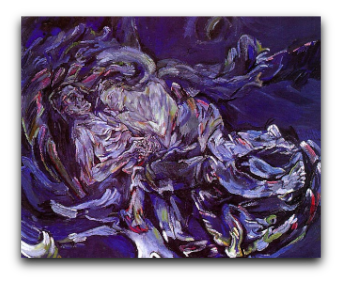
Bride of the Wind (1913)
Oskar Kokoschka (1886-1980)
Austrian painter, printmaker and writer. He revolutionized the art of the turn of the century, adopting a radical approach to art, which was for him essential to the human condition and politically engaged. Kokoschka promoted a new visual effect in painting, related to making visible the immaterial forces active behind the external appearance of things, in which the object was a living, moving substance that revealed its inner essence to the eye. As was true of many artists of his generation, Kokoschka’s creative urge was also expressed in literature and showed a clear inclination towards music and theatre.
Gallery
Edwin Lachnit. "Kokoschka, Oskar." In Grove Art Online. Oxford Art Online, http://www.oxfordartonline.com/subscriber/article/grove/art/T047173 (accessed February 21, 2010).